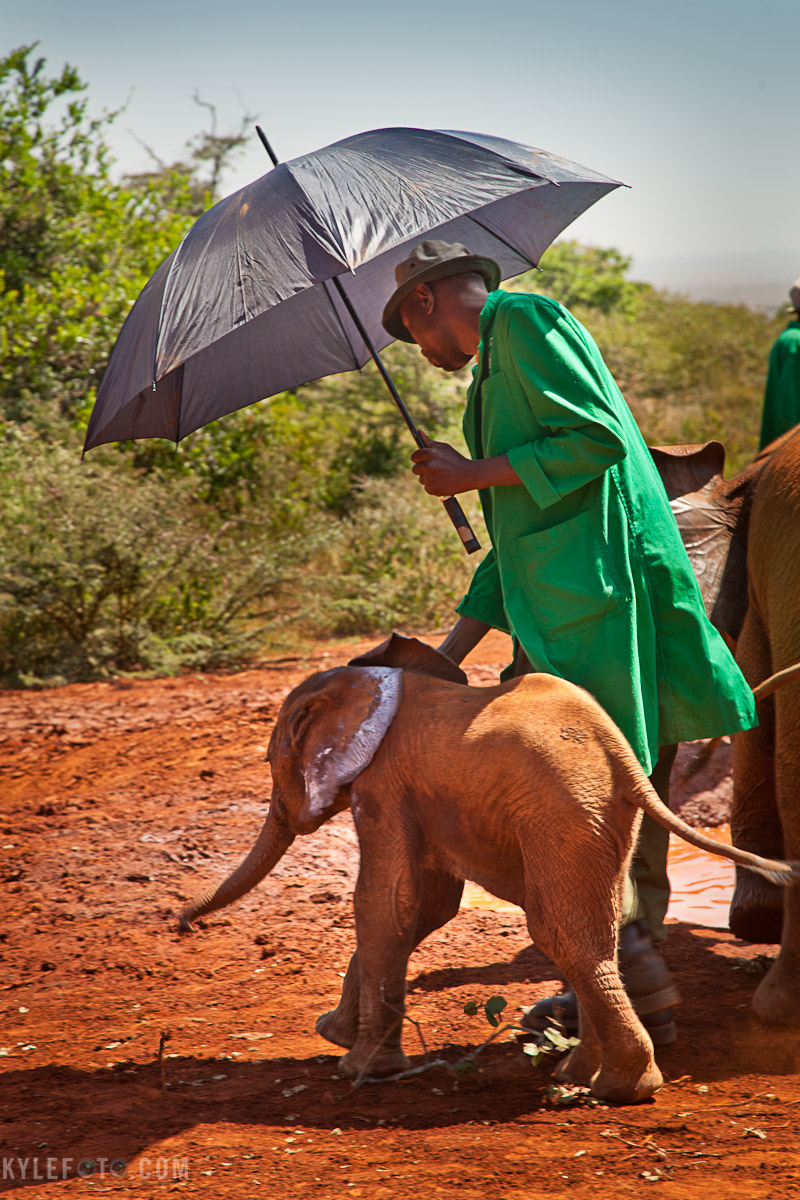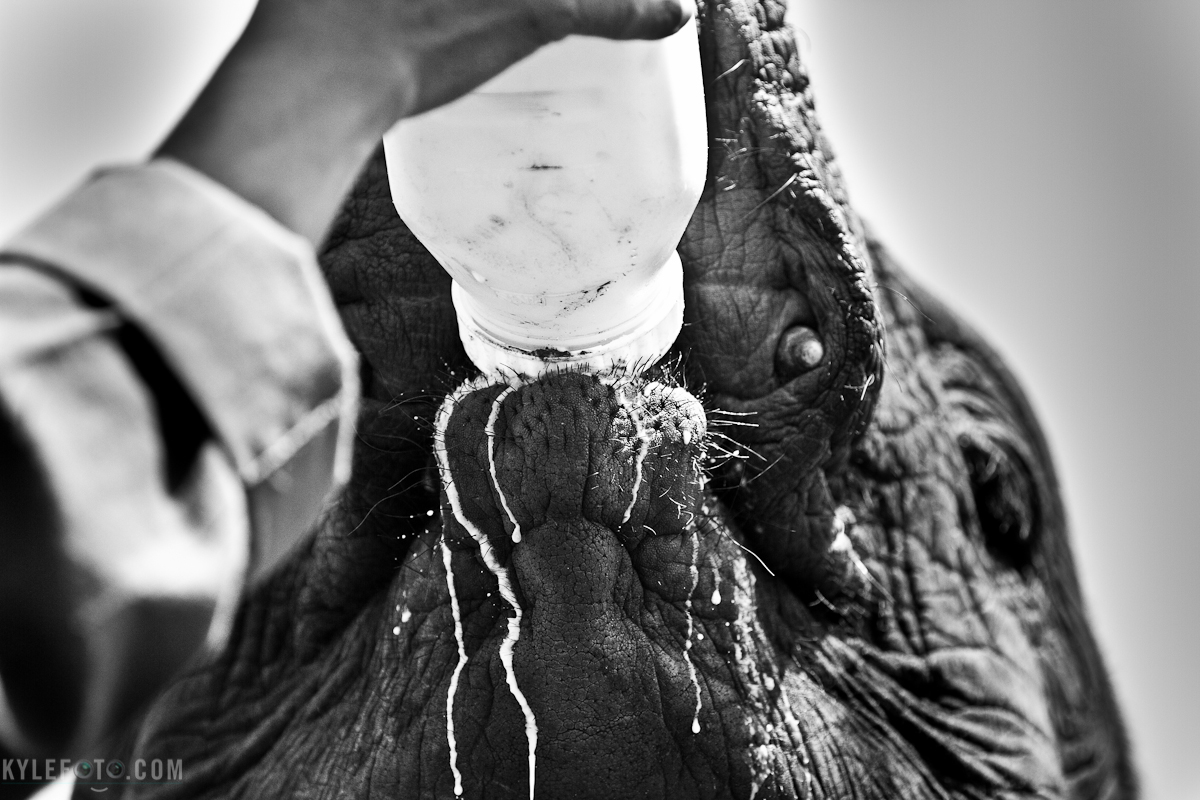Serengeti, Tanzania, Africa After spending time at an elephant orphanage I’ve truly come to understand how important a mother and a family is for an elephants survival. This baby elephant who has not yet mastered the art of applying his own mud and dirt sunscreen is highly reliant on the shade of the mother in the harsh african sun. It never occurred that the mother provides so much protection just by standing there, just by existing. Of course this baby is also reliant on her wisdom, affection and milk. Should a young elephant become separated from it’s family, despite being taken in by people and being well fed, history has shown that pure grief over the loss can kill an elephant. Clearly this baby has her mother, she was so happy she could barely contain it as she ran around and swung her trunk all over the Serengeti.
Photographic Details: I wanted a photograph that visually expressed how large and important a mother can be to her calf. While the focus is on the baby elephant jovially swinging her trunk around, I wanted a background dominated by the body and textures of the mother towering over her, the same way a home would. Reminiscent of a classical portrait of a person with their home situated in the background if you will.
Canon EOS 7D 1/200s f/7.1 ISO400 400mm For #feelgoodfriday curated by +Rebecca Borg
[button size="large" link="http://kylefoto.smugmug.com/Animals/Africa/19644918_hpCKDK#!i=1723872251&k=HHTCc8D" linkTarget="_blank" color="blue"]Order Print through Smugmug[/button]















